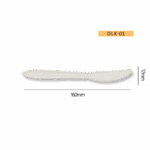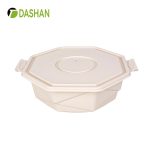Now domestic disposable plastic cups into those kinds of materials, different materials of disposable cups and what kind of characteristics!
Plastic cups are mainly made of: PP plastic cups, PET plastic cups, PS plastic cups, EPS plastic cups, and PLA plastic cups.
PP plastic cup: is the most common in China, if you add certain other formulas it can withstand temperatures from -30 degrees to 120 degrees. PP plastic cup cost and hygiene are better. So the most widely used. But many domestic black factories now use recycled PP material, garbage material PP, recycled material PP, and disposable cups, if the material is made out of such a cup after the use of the human body or a relatively large bad, so buy disposable plastic cups do not just greedy cheap, to choose the regular manufacturers, large manufacturers, manufacturers with QS certificate.
PET plastic cup: the characteristics of high transparency and high hardness, is a disposable cup inside the most high-grade material. But because of the raw materials and manufacturing costs, the application is not very wide.
PS plastic cups: mainly used in injection molding cups above, want to airplanes on the airline cup is PS injection molding made of
EPS plastic cups: commonly known as foam cups or foam cups, EPS plastic cups in the mainland are now less due to a strict national ban, but in the Tainan area are still more. His characteristics are to drink from the cup can play a certain role in heat insulation and cold. But the foam cup is not recyclable, and EPS incineration will produce toxic gases that cause cancer, which is quite harmful to the human body
PLA plastic cup: PLA is a new environmentally friendly material, its characteristics are buried in the soil after use and can be degraded. Now this material can really be completely degraded only in the United States. Domestic that can be contaminated is basically some starch plus PP material plus some binder synthesis so that the products made in a humid place will be moldy. And the binder also has some harmful effects on the human body.





